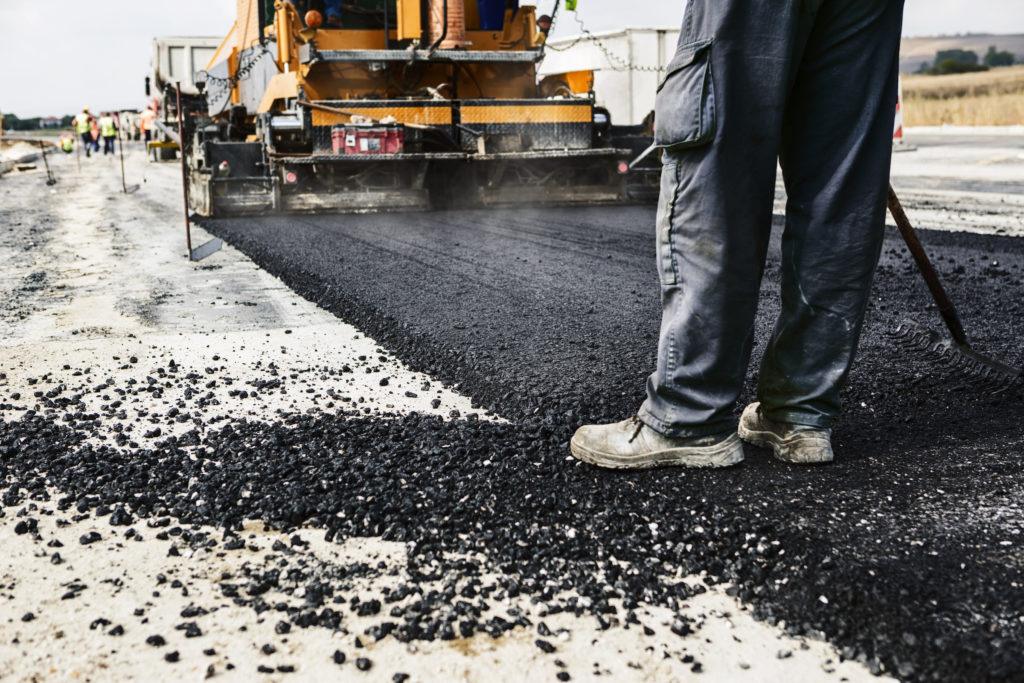Pavement Services: Keep Your Asphalt and Driveways in Top Shape

As weather changes, aging asphalt and pavements can start to show signs of aging. It’s true. There’s no escape from aging, even for our pavements and roads. Some will age more gracefully than others. The longevity depends on many factors—from the quality of the materials to installation, traffic, and maintenance. So how do you keep your roads looking youthful and vibrant?
A little bit of maintenance and upkeep of course.
Let’s look at some of the details.
What is Asphalt or Pavement Maintenance — And Why Do I Need it?
Pavement maintenance can range from a cleaning, power washing, or more advanced form of maintenance to repairing cracks or breaks. Asphalt is built to withstand. Its purpose is usually to take on a lot of weight and traffic. The purpose of asphalt, after all, is to withstand high levels of vehicular traffic. Pavement is usually associated with pedestrian traffic, as it is more commonly used for paths, walkways, and places where people walk.
So if your asphalt or pavement is cracking, here’s what you need to know.
Before a repair is put in place, it’s important to understand the kind of damage and the root cause. The most common type of asphalt distresses include distortion, traffic loading, environmental or climate influences, or deficiencies in drainage. All of this can be attributed to increased traffic, environmental factors, or cut corners in the initial installation.
Examples of common asphalt issues as defined by the Asphalt Institute include:
Cracking
This is probably the most recognized type of asphalt damage, although there are different forms and degrees.
- Fatigue Cracking: This is most commonly referred to as alligator cracking. You know it when you see it. It involves jagged and interconnected cracks that look a little bit like alligator skin.
- Block Cracking: If there is shrinkage of the asphalt due to temperature or other factors, larger rectangular cracking can occur.
- Edge cracking: When proper support is not built for the pavement edge, the edges can crack and curl causing what is called edge cracking.
Disintegration
As the pavement withstands traffic, wear and tear, and environmental factors, the material can start to disintegrate and develop different types of disintegration.
- Potholes: Most people are familiar with potholes. They are the common enemy of parking lots and roadways, not to mention motorists that accidentally drive over them to the detriment of their vehicles. Potholes are concave holes that form as a result of the disintegration of the asphalt or as an added consequence of another type of distress.
- Raveling: This is when the asphalt particles wear away. This can be a result of low-quality materials in the initial installation.
Other types of common asphalt woes include what are known as distortions. These are a result of a weak mix or deficiencies in the subgrade levels. They include distresses known as rutting, shoving, and depressions. Asphalt pavement rehabilitation can be effective against these distortions and deteriorations.
How Does Pothole Repair Work?
A pothole doesn’t appear overnight, but once it appears it is difficult to make it disappear. The asphalt of any given roadway or lot will experience a lot of abuse. From vehicle traffic to the harsh sun rays (especially in the Southwest), rain, snow, and more. As soon as small cracks begin to form, it is the warning sign that a pothole is on the horizon.
When a crack forms, moisture will find its way in. Water seeping into the sublevels of the material is detrimental and erodes the support system built into the asphalt. With enough time and moisture, the asphalt fails and collapses and—voila— you have a pothole.
So pothole repair can vary depending on the depth and size of the hole. There are temporary band-aids to put on potholes, but before more time passes you want a professional to come and perform asphalt repair.
Pothole repairs include:
- Professionally cleaning the pothole of debris or obstructions
- Pouring a high-quality hot asphalt mix into the hole
- Compact it to the proper density
How Can I Fix Alligator Cracking?
Another highly-requested asphalt repair is fixing alligator cracking. Not only is it unsightly, but it can only make matters worse if left untreated. That’s because as moisture seeps into the cracks, it may spell trouble.
There’s a couple of options when it comes to alligator cracking.
- One is a short-term fix that can mean applying crack filler or seal coating.
- A more permanent fix and therefore likely more cost-effective. The process is far more involved as it requires removing the damaged section and investigating the problem on the sub-base. It then may require making repairs or installing a new sub-base and an entirely new asphalt surface.
Is Your Asphalt Showing Signs of Aging? Call the Experts Today
Constructors, Inc offers a wide range of asphalt and paving services. We know how hard it can be to damage an asphalt surface or pavement. So we not only offer solutions but effective and high-quality installation.
How can we help you? Whether you have a small church parking lot, a school lot, a driveway, or other asphalt or pavement surface, maintaining its integrity means it will last longer and serve you better. Have questions? Call Constructors, Inc today.